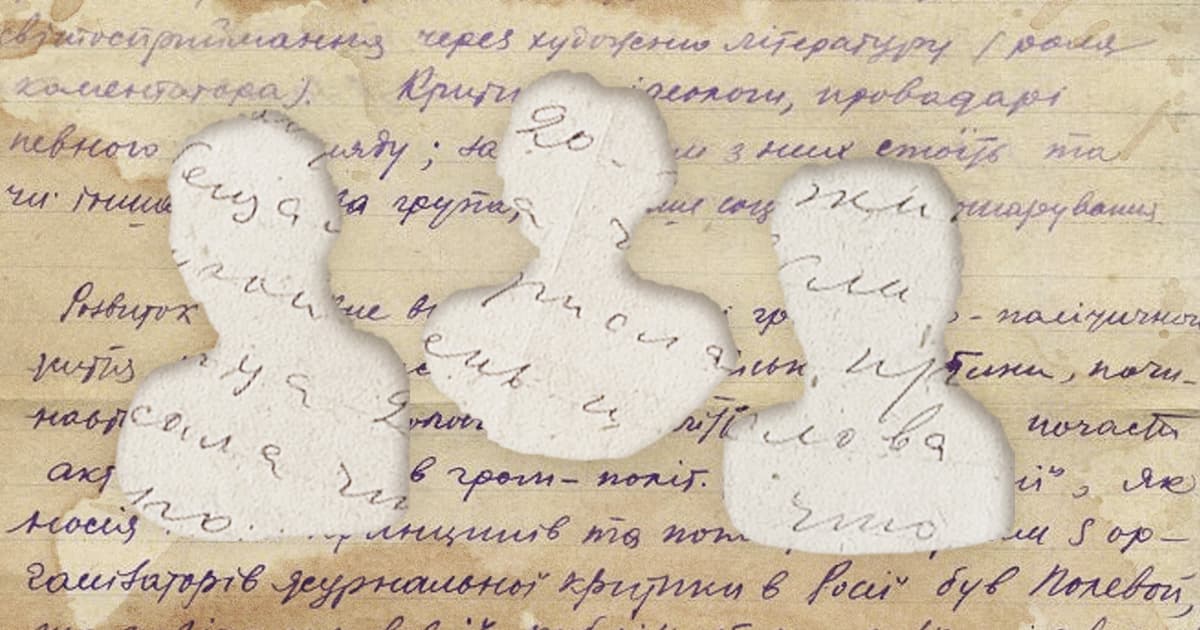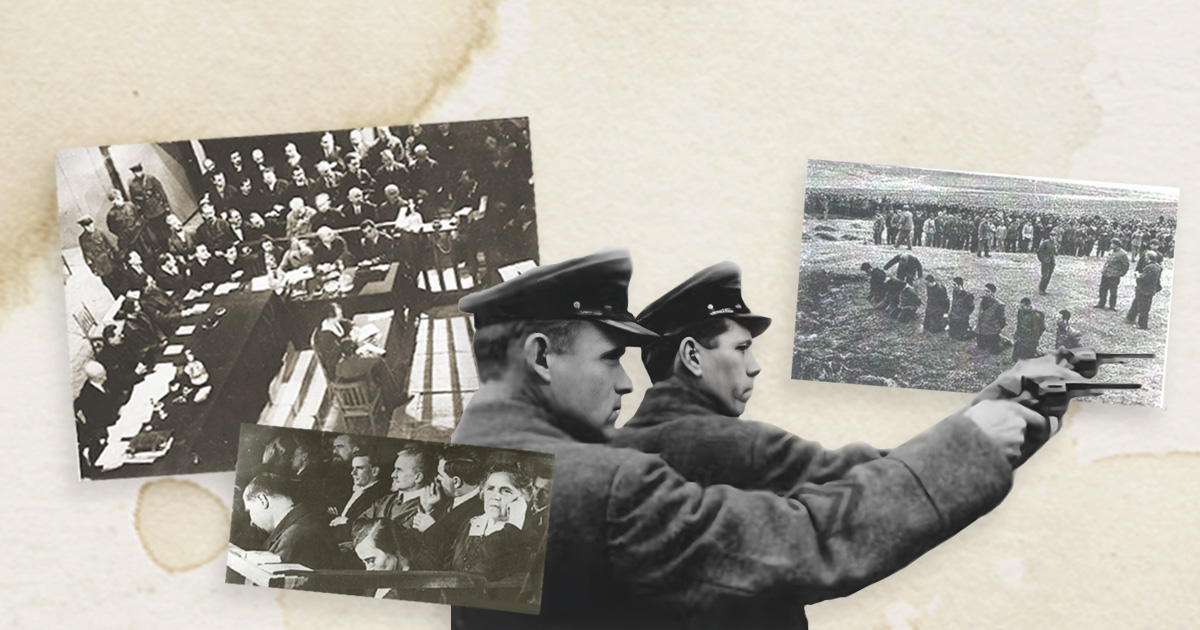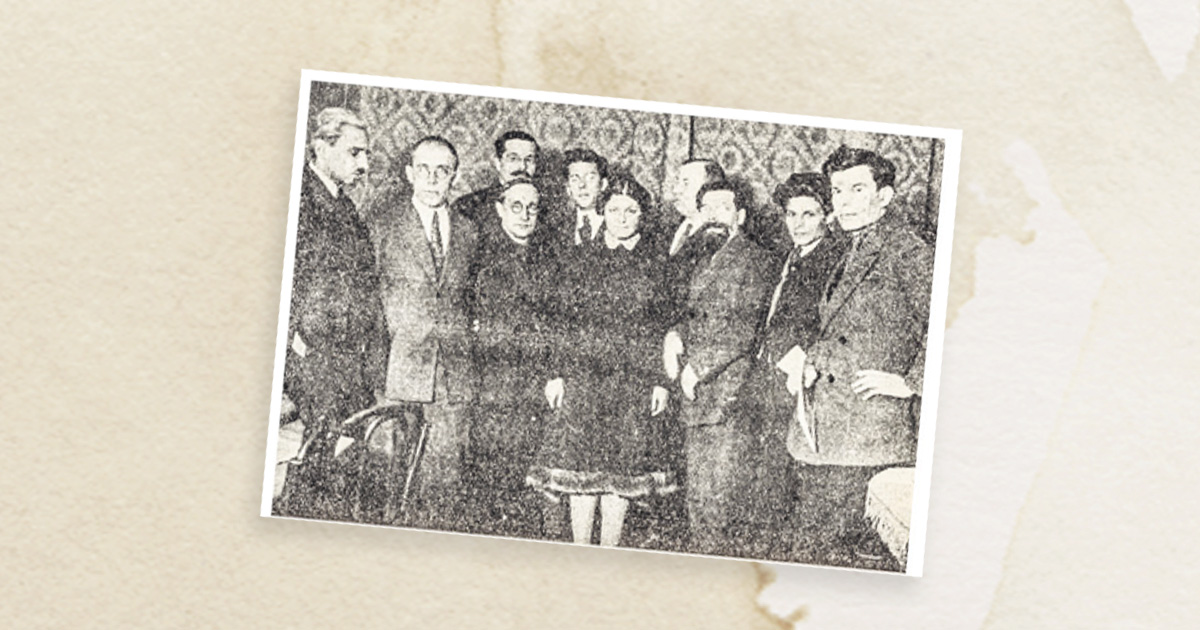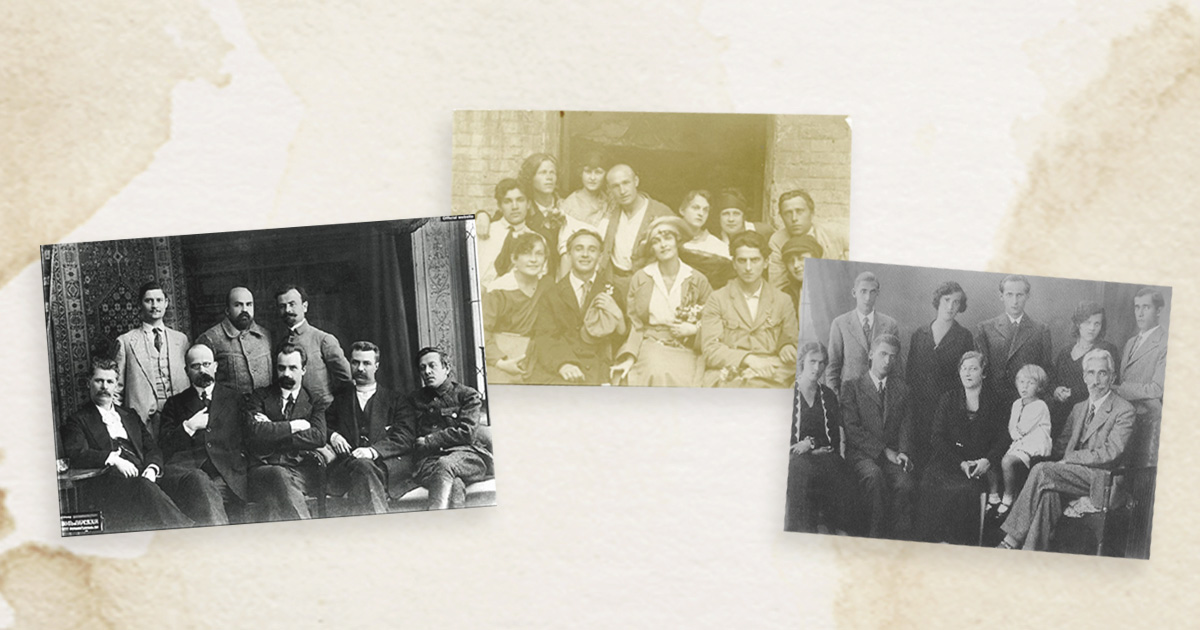Why are Ukrainian artists of the last century so little known in the world?

In 2022, the world has only just begun to discover Ukrainian culture, including its artists and writers. For most people, Ukrainian culture did not exist, as Russian culture always came to replace it, and Ukrainian artists of the last century were forbidden to create.
The Soviet authorities destroyed the Ukrainian intelligentsia long before writers, poets, and artists could become world geniuses.
The Ukrainian culture of the last century did not have the opportunity to stand alongside the examples of world art. Ukrainian artists were persecuted, imprisoned, and killed just because they were Ukrainian.
"Ukraine became an experimental area where the communist regime gained experience in taming and destroying culture.

The confrontation here began long before the end of World War II, immediately after the liquidation of the Ukrainian People's Republic in 1921. It was the late 20s and 30s of the last century that saw the bloodiest harvest in the elimination of Ukrainian culture," says historian Volodymyr Viatrovych.
Svidomi tells how the Soviet authorities blocked the access of Ukrainian culture to the world stage by killing its representatives.
Persecution and executions of the intelligentsia
One of the key slogans in the Ukrainian cultural discourse of the time was the slogan formulated by the Ukrainian writer Mykola Khvylovyi: "Get away from Moscow!" The Bolsheviks struck back by destroying the phenomenon of Ukrainian culture of the 1920s through the physical elimination of its creators.
In 1934 alone, 97 of the 193 members of the Writers' Union of Ukraine were repressed. The destroyed main centre of culture in Ukraine could no longer spread ideas to other cultures.
Around the end of the 1920s, arrests of Ukrainian intelligentsia began with trials organised and fabricated by the Soviet authorities.
This made it impossible for artists to create and distribute their works freely.

The first trial against the Ukrainian intelligentsia was the Union for the Liberation of Ukraine process in 1930. The aim was to discredit the Ukrainian intelligentsia and destroy the national movement. 45 people were put on trial, most of them representatives of the Ukrainian intelligentsia: Volodymyr Chekhivskyi, Andrii Nikovskyi, Liudmyla Starytska-Cherniakhivska, Yosyp Hermaize, Volodymyr Durdukivskyi, Mariia Tobilevych, and more.
The focus of the tragedy of Ukrainian culture of this period was November 3, 1937, when, in honour of the twentieth anniversary of the October Revolution, the Soviet authorities shot Les Kurbas, Mykola Kulish, Matvii Yavorskyi, Volodymyr Chekhovskyi, Valerian Pidmohylnyi, Valerian Polishchuk, and other prominent Ukrainian artists based on extrajudicial verdicts.
Then, the NKVD shot 1111 people, including 287 Ukrainians and people closely associated with Ukraine. Historian Timothy Snyder believes that the territory of Ukraine was the the deadliest place on Earth from the early 1930s to the mid-1940s.
Impact on the development of culture
Persecution and murders affected the development of Ukrainian culture at the time, as the creative process was interrupted several times and stalled in its development.
"As a result, Ukrainian culture suffered catastrophic losses when many people were killed in their prime long before they could create many masterpieces. As a result, our culture is poorly known in the world," says Vladlen Maraiev, a historian and author of the History Without Myths channel.

In addition to eliminating Ukrainian artists, the Soviet authorities also encouraged them to collaborate with the communist regime. This contributed to the restriction of creative activity, as artists had to write about the communist regime only in a positive way.
One such example is the poet Pavlo Tychyna. According to Maraiev, Tychyna was never able to return to real literature and remained an artist who glorified the party and the political regime.
"The artistic process in the 60s and 80s could have been completely different, on par with the best examples of world art, if those terrible events had not happened," says Vladlen Maraiev.
Restrictions on activities abroad
In the 1920s, Ukrainian writers travelled abroad to hold creative events and meet with Western colleagues. However, during such trips, artists were almost always accompanied by representatives of the Soviet secret services, who monitored the behaviour of each member of the delegation and tried to prevent any attempts by Ukrainians to stay there.
The need to spread knowledge about Ukrainian artists abroad
The work of Ukrainian artists is now spreading abroad, with the number of translated Ukrainian books increasing from around 48 to 153 between 2013 and 2020.
Ukrainians won the right to create their own history in a bloody struggle, and only now, during the last couple of months of the full-scale war, has the world accepted that Ukraine is a subject, not an object, of history, says historian Timothy Snyder.
"While the West is rediscovering Ukrainians, Ukrainians are rediscovering themselves in a new way, but what is at the centre of these discoveries is their identity. Ukrainians know exactly who they are," says Snyder.
Representatives of the Executed Renaissance or the Union for the Liberation of Ukraine trial defended freedom, and most importantly, they were ready to die for the Ukrainian idea.
Today, Ukrainians are losing talented people almost every day to Russia, just like a hundred years ago.


